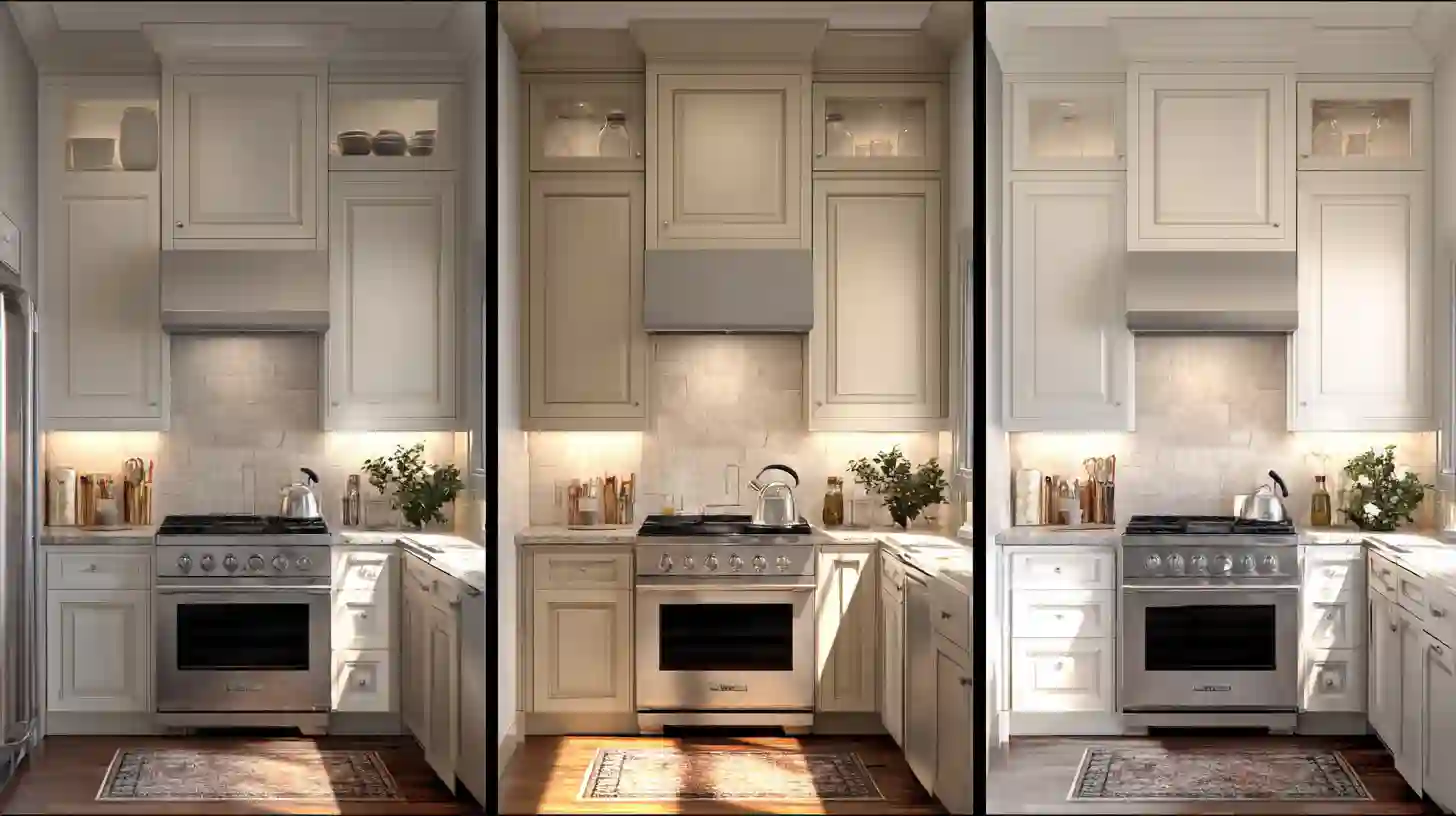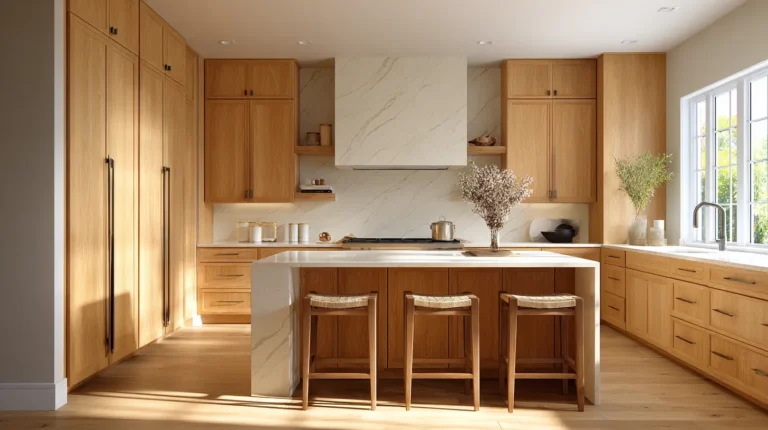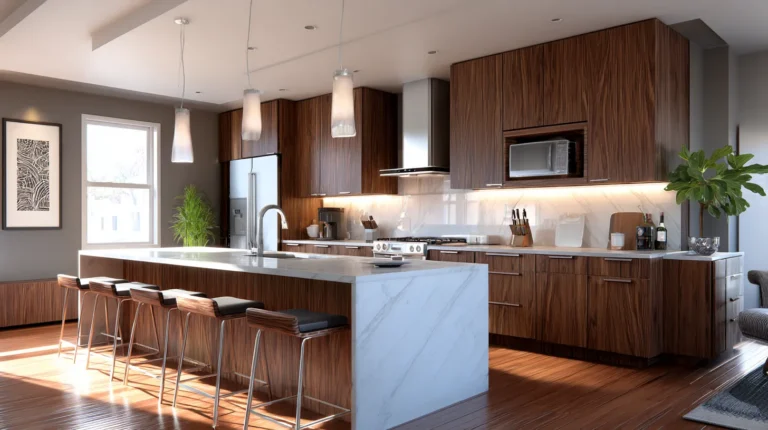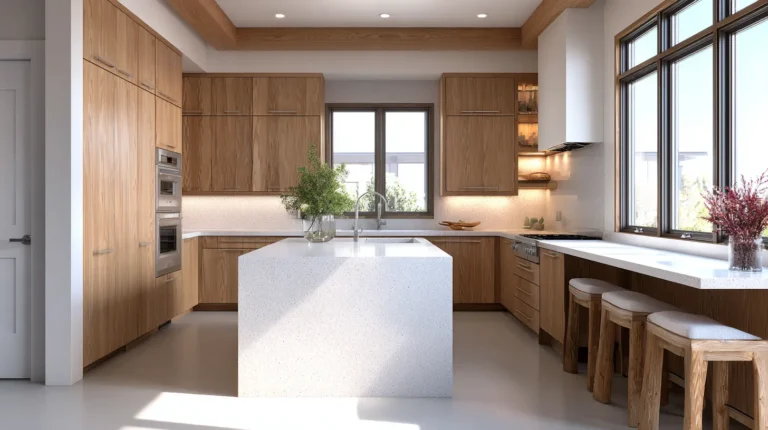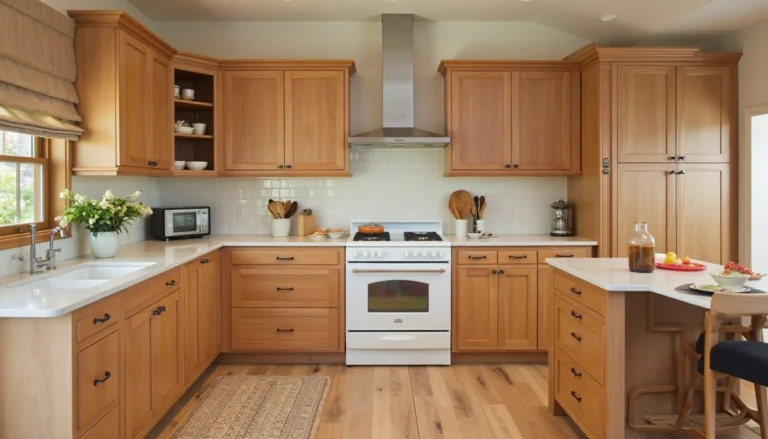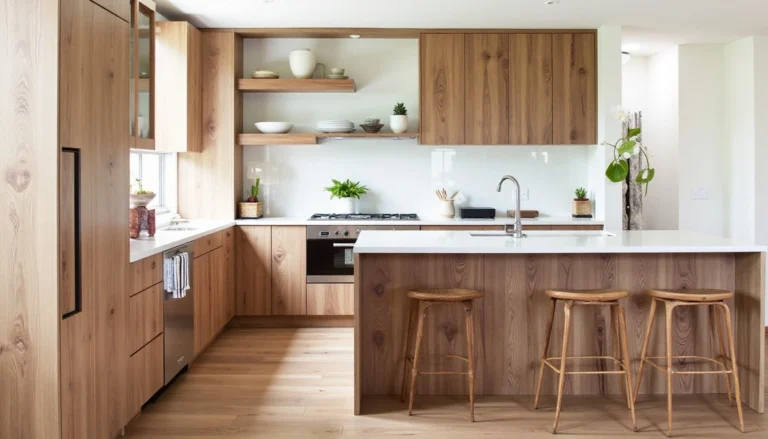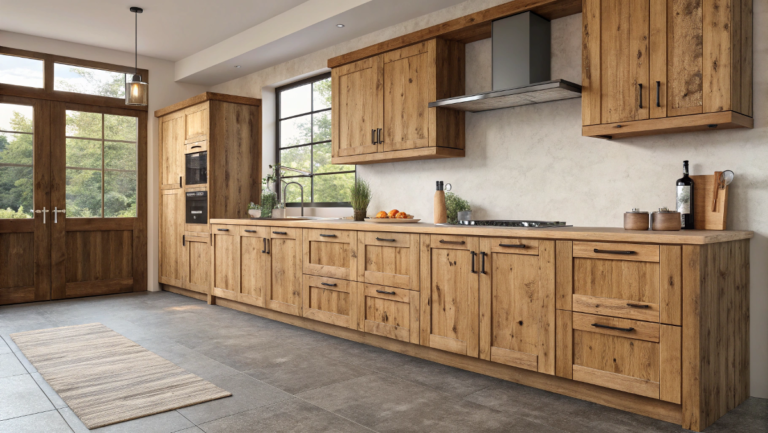Small Space Custom Cabinets Ideas You’ll Love
I still remember the Saturday morning I stood in my kitchen, coffee in one hand, tape measure in the other, staring at a wall that was definitely not straight. Seriously, who builds a house like this?. That was the moment I learned why people rave about custom cabinets. Stock cabinets weren’t going to cut it, unless I wanted weird gaps, awkward fillers, and a daily rem
Inder that my kitchen had a mind of its own.
True story: I tried to “make it work” with semi-custom boxes first. Let’s say my neighbor Sarah came over, cocked her head at the crooked corner, and said, Hmm… maybe it’s supposed to look like that? It wasn’t. That little disaster taught me something: sometimes the only way to make a kitchen actually fit is to have cabinets built for your space, quirks and all.
That’s where this guide comes in. If you’ve ever wondered whether custom cabinets are worth the splurge, how much they really cost, or if they’re even practical for your home, you’re in the right place. I’ve been there, made the mistakes, ask me about the mis-measured drawer that wouldn’t close over my oven handle, and figured out what actually matters. Let’s dig in together
Custom cabinets are made-to-order kitchen or bathroom cabinets built to fit your exact space, style, and storage needs. Unlike stock or semi-custom options, they offer unlimited choices in size, material, and finish, ideal for homes with unique layouts, crooked walls, or long-term value goals
What are custom cabinets?
Think of custom cabinets as the tailored suit of the kitchen world. Instead of grabbing something off the rack, stock. Or hemming it a little to make it fit semi-custom, custom is built just for your space. Every measurement, material, and finish is made to order, down to that oddly angled corner or the extra-tall ceiling your builder thought was a good idea back in 1987.
Custom cabinets vs semi-custom vs stock
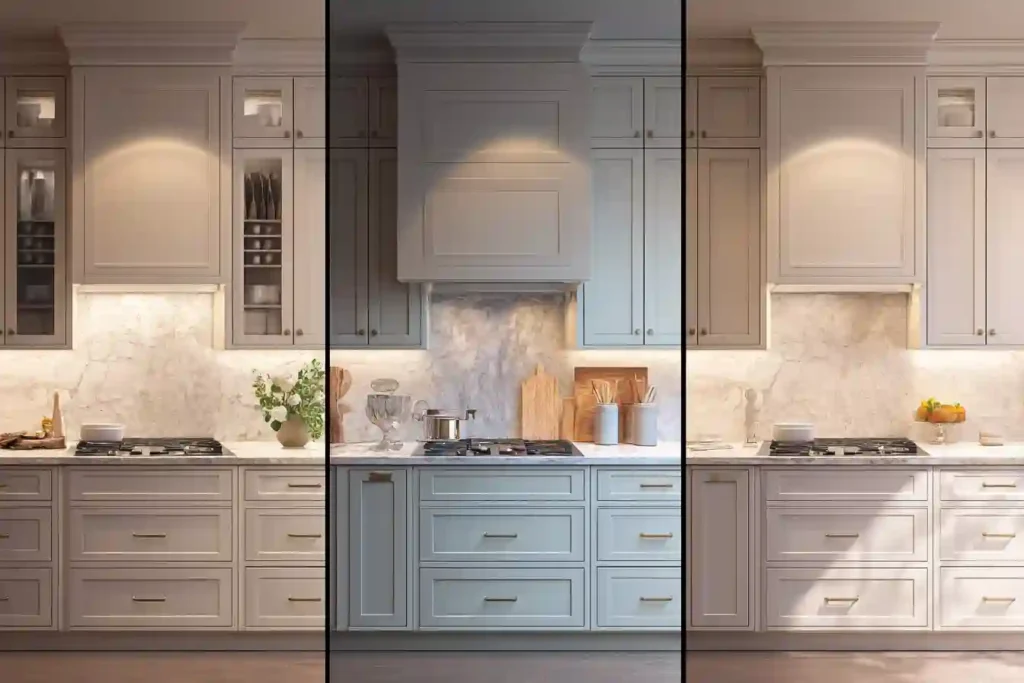
-
Stock cabinets. Pre-made in fixed sizes, shipped quickly, lowest price point. Perfect for apartments, rentals, or if you don’t care about a little wasted space.
-
Semi-custom cabinets. Factory boxes with some wiggle room, different depths, and a few style options. Budget-friendly, but still limited if your space is quirky.
-
Custom cabinets. Built by a cabinetmaker (or a shop) to fit exactly, no fillers unless you want them, and every finish, wood species, and organizer is up to you.
Here’s the thing. On paper, semi-custom sounds “good enough. And sometimes it is! But if you’ve got crooked walls, weird plumbing chases, or that one corner that never makes sense, custom is often the only way to avoid daily frustration. Ask me how I know
When custom matters in real homes with quirks
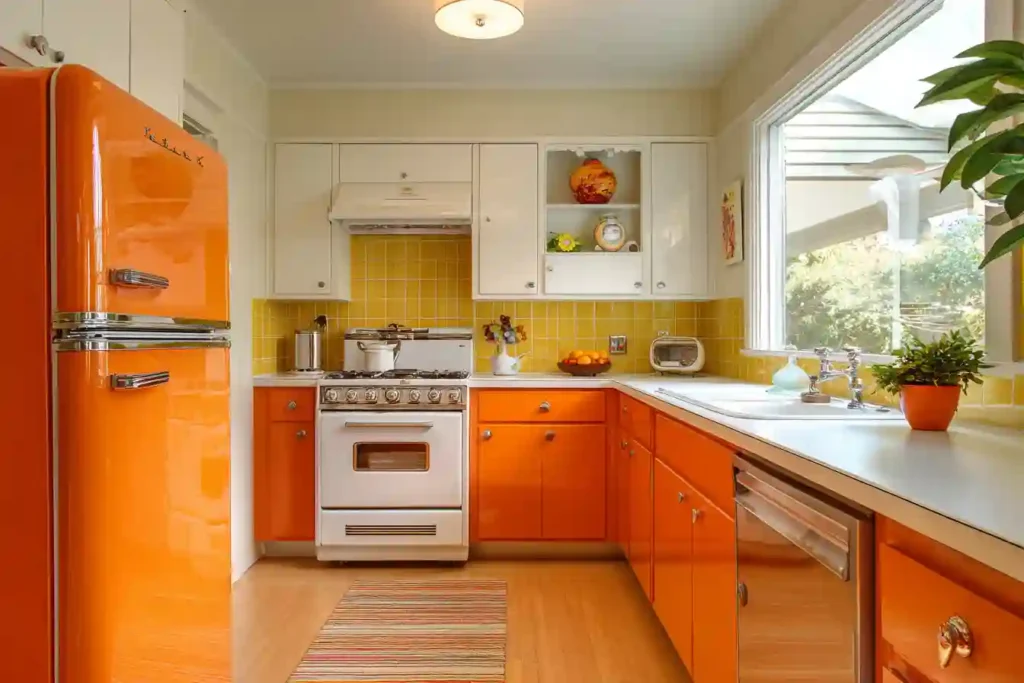
You know those glossy magazine kitchens where every wall is straight and every appliance fits like a glove? Yeah, that’s not most of our houses. Real homes have quirks. Mine has a wall that bows out just enough to make a stock cabinet stick out like it’s trying to escape.
That’s where custom cabinets shine. They’re designed around.
-
Crooked walls and odd corners. so your countertop doesn’t end up with a weird triangle gap)
-
Tall ceilings or short ceilings, because no one likes dust shelves above the cabinets
-
Non-standard appliances. like that retro stove you scored on Facebook Marketplace
-
Historic homes with original trim you don’t want to cover up
Basically, if your kitchen has character translation: problems, custom cabinets make everything look intentional instead of “oops, we tried
Quick pros and cons of custom cabinets
Before you fall in love with the idea of perfectly fitted, made-for-you cabinetry, let’s be real about both sides:
Pros
-
Fits like a glove, no wasted corners, no filler strips you’ll regret later
-
Unlimited choices for wood, finish, hardware, and interior organizers
-
Adds long-term value that buyers notice custom work
-
Built to last decades if done right
Cons
-
Costs more than stock or semi-custom, sometimes a lot more
-
Longer wait times. think months, not weeks
-
Requires careful measuring and double-checking. trust me
-
Over-customizing can mean you’re paying for features you don’t need
Real talk: if you’ve got the budget and patience, the pros usually outweigh the cons. But if you’re trying to remodel fast, or you’re working with a builder-grade budget, semi-custom might save you a few headaches
When custom cabinets are worth it and when they’re not
There’s a sweet spot where custom cabinets make total sense… and a few situations where they just don’t. I learned this the hard way when I priced out a fully custom setup for my first little starter kitchen spoiler. It would’ve cost more than my car
Layout challenges, historic homes, and non-standard appliances
If your kitchen is quirky, custom usually pays off. Think.
-
Weird layouts where standard 12, 15, or 30 boxes won’t fit
-
Older homes with plaster walls, unusual trim, or uneven floors
-
Unique appliances like farmhouse sinks, oversized fridges, or that 1950s oven you inherited from Grandma
This is where custom shines. You’re not forcing square boxes into curvy spaces.
Budget thresholds and long-term plans
Custom isn’t cheap. For most kitchens, you’re looking at $500–$1,200 per linear foot installed. If you’re planning to stay in your home for 10+ years, the investment can make sense, you’ll enjoy it daily, and it’ll hold up. But if you’re flipping or unsure how long you’ll stay? You might never see the return.
Decision checklist to choose custom cabinets
Here’s a quick gut-check I wish I’d had.
-
Do you have quirky walls, ceilings, or appliances? Custom wins
-
Are you planning to stay put for the next decade? Leans custom
-
Do you need a quick reno on a tight budget? Semi-custom or stock
-
Do you care about long-term resale value? Custom helps
-
Are you okay waiting 2–4 months for cabinets to arrive? Then the customs fine
Custom cabinet materials and construction that actually last
Here’s the truth: your custom cabinets are only as good as what’s hiding under that pretty paint or stain. I once chose a budget wood option because the sample looked gorgeous in the showroom. only to have a drawer front warp after one hot, humid summer. ugh, rookie mistake.
Plywood vs MDF, solid wood, and real-world durability

-
Plywood: Strong, stable, and resistant to warping, my go-to for cabinet boxes.
-
MDF medium-density fiberboard. Smooth surface, great for painted doors, but hates water and can swell if your dishwasher leaks.
-
Solid wood. Classic and beautiful, but remember, wood moves with humidity. It’s best for doors and face frames, not entire boxes.
Door styles. inset, full overlay, frameless
-
Inset doors. Fit inside the frame, gorgeous and traditional, but less forgiving if your house shifts.
-
Full overlay. Covers most of the frame, gives a sleek look, and hides imperfections.
-
Frameless Euro-style. No face frame at all. More storage inside, with a super modern look.
Hardware, drawer boxes, and organizers that change daily life
-
Drawer boxes. Dovetail joints and solid wood sides last way longer than staples and particleboard.
-
Organizers. Pull-out trash bins, spice racks, tray dividers, and small add-ons that make life easier.
-
Hardware. Good hinges and slides matter more than fancy handles, trust me, soft-close is worth every penny.
Soft-close, undermount slides, and hinge quality are what to look for
Soft-close doors and drawers are no longer a luxury. they’re sanity-savers. Look for:
-
Blum or Grass hinges industry favorites
-
Undermount, full-extension slides so you can see the back of your drawers
-
Adjustable hinges for when walls shift, because they will
Custom cabinets cost in 2025. What drives the price

Sticker shock is real. The first quote I got for custom cabinets made me want to curl up on the kitchen floor and cry (and maybe text my husband that we should just live with the 1980s oak forever). But once I dug into the details, I realized why the numbers looked so high, and which parts I could actually control.
Cost per linear foot and total project range
Most homeowners pay $500. $1,200 per linear foot for custom cabinet installation. Translation:
-
Small galley kitchen. $12,000, $20,000
-
Mid-size kitchen. $20,000,$35,000
-
Large or luxury kitchen. $40,000+
Pro tip: quotes vary wildly by region and by whether you go with a local shop or factory-built custom.
Finish level, wood species, and design complexity
-
Wood choice. Maple and oak cost less than walnut or cherry. Exotic woods? Gorgeous, but pricey.
-
Finish. Painted cabinets can add 10. 15% compared to stained.
-
Design complexity. Fancy details like arches, glass fronts, or intricate moulding all add labor hours (read: $$$).
Hidden costs. delivery, installation, fillers, panels, electrical, permits
-
Delivery fees. Especially for factory-made custom, shipping is no joke.
-
Installation. Skilled installers matter. expect several thousand here.
-
Fillers and panels. Even custom sometimes needs tweaks; these add up.
-
Appliance panels. That seamless fridge look? Often $800.$1,500 extra.
-
Electrical and plumbing. Moving outlets or plumbing to fit new layouts can add unexpected costs.
Sample budgets for small, mid-size, and large kitchens
-
Small kitchen.100 linear feet. $12,000.$20,000
-
Mid-size. 150 linear feet. $20,000.$35,000
-
Large kitchen. 200+ linear feet. $40,000.$60,000+
I’ll admit: I went over budget by about $3,000 because I added pull-out pantry drawers at the last second. No regrets, but it’s proof you should pad your budget by at least 10.15%
Factory-custom vs local cabinet shop
When I first heard the term factory-custom, I laughed. I mean, how can something be both mass-produced and custom? Turns out, it’s a real thing, and it competes with the one-cabinetmaker-in-town, town approach. Both options have pros and cons, and I’ve tried each.
Lead times, finish quality, and consistency
-
Factory-custom. Usually faster, 8–12 weeks, with machine-level precision and consistent finishes. Perfect if you want clean, modern lines.
-
Local shop. Lead times vary, 12–20 weeks, but you get true craftsmanship, little details, custom trim, and a personal touch.
Site measurement and accountability
-
Factory-custom: Measurements are only as good as the installer you hire. If they’re off by half an inch, guess who’s stuck with a filler strip? (Been there.)
-
Local shop: The cabinetmaker often comes to your house, measures twice, and makes adjustments during installation. More accountability.
How to combine semi-custom boxes with custom pieces
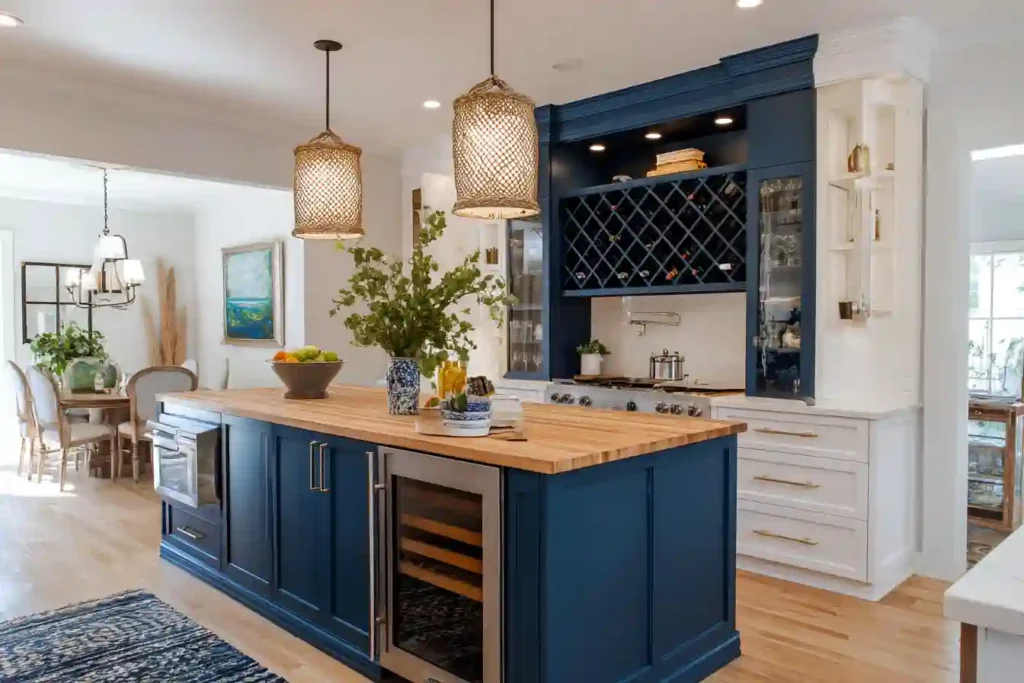
One of my favorite hacks: mix and match. Use semi-custom boxes for the bulk of your kitchen, then add custom elements, like a hutch, island, or appliance panel. from a local shop. Saves thousands while still giving you the wow factor
How to hire for custom cabinets without regrets
Here’s the thing: the wrong cabinetmaker or contractor can turn your dream kitchen into a six-month headache. Ask me how I know… I once waited three extra weeks because my installer forgot to order crown molding. Choosing wisely makes all the difference.
Must-ask questions and quote comparison tips
When you’re interviewing cabinetmakers, ask:
-
Can I see photos of past projects and visit one in person?
-
Do you do your own installs or hire out?
-
How do you handle walls that aren’t square?
-
What’s your warranty policy?
And always, always get at least three quotes. Not just for price, but to compare what’s included. One shop may add soft-close hardware automatically, while another charges extra.
Contracts, change orders, and warranty traps
-
Contracts. Make sure your quote spells out materials, finishes, hardware brands, and timeline. Vague = dangerous.
-
Change orders. Every little change after signing adds cost. Build a 10% cushion into your budget for these.
-
Warranty. A one-year warranty is the bare minimum. A solid shop will stand by its work for 5+ years.
Timeline realities and how to keep your project moving
Expect 12–20 weeks from design to delivery. Add delays for backordered hardware, installer schedules, or surprise wall issues. My tip? Order cabinets before you demo your old ones. Otherwise, you’ll be eating takeout for months.
Installation day. avoiding the my wall isn’t square meltdown
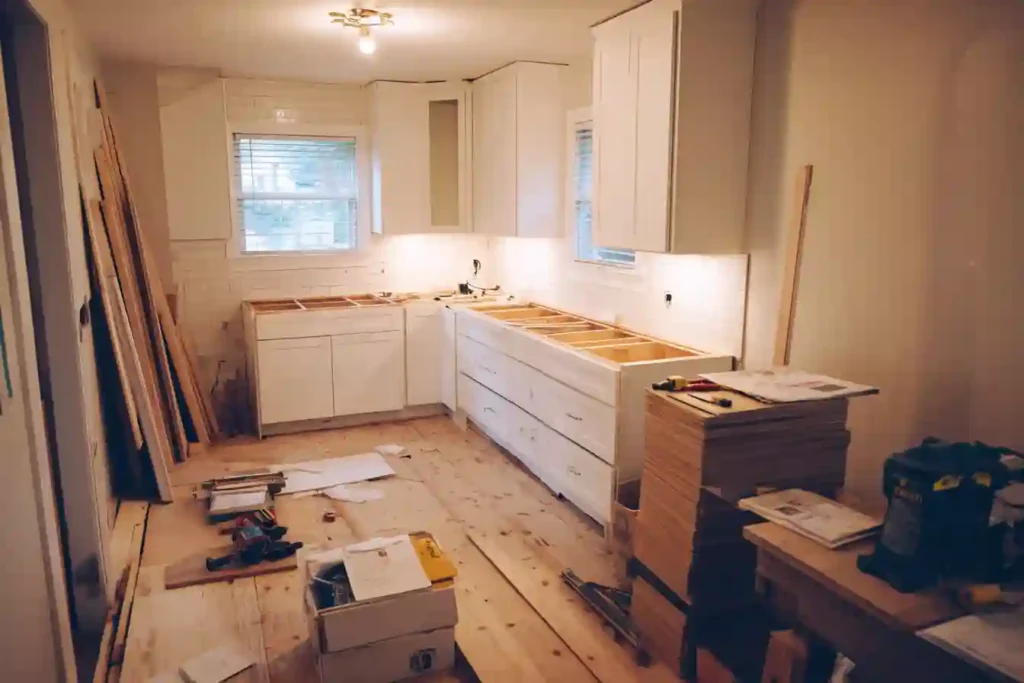
If you’ve made it this far, congrats, the hard part’s done. But don’t let anyone tell you that install day is easy. When my cabinets showed up, I thought it would be all smiles and power tools. Instead, I found myself googling how to shim a cabinet at 11 p.m.
Prep, leveling, shimming, and scribe strips
-
Prep. Clear the space, double-check plumbing/electrical, and have your appliances on-site.
-
Leveling. Floors are rarely perfect. Installers use shims to keep everything square.
-
Scribe strips. These thin filler pieces hug walls so you don’t see awkward gaps. They’re lifesavers when walls bow or tilt.
Appliance panels and crown moulding gotchas
-
Appliance panels. That seamless fridge look? It requires exact measurements. Off by even ¼ inch and the panel won’t fit.
-
Crown moulding. Gorgeous, but tricky in older homes where ceilings dip. My installer had to custom-cut pieces at three different angles just to make mine look straight.
Final walk-through checklist for custom cabinets
Before signing off, check.
-
Doors and drawers open smoothly and align evenly
-
Crown moulding is tight, no gaps
-
Panels match grain and color
-
Soft-close hardware works
-
No scratches or finish flaws
Take notes, snap photos, and don’t be shy about pointing things out. A good cabinetmaker wants you happy before they pack up their tools
Care and maintenance for custom cabinets over the years

The good news? Custom cabinets are built to last decades. The bad news? They won’t stay gorgeous if you treat them like garage shelves. Guilty, my kids once used a lower drawer as a step stool to reach the cookies. A little upkeep goes a long way.
Cleaning, humidity control, and finish touch-ups
-
Cleaning. Skip the harsh chemicals. A damp cloth with mild soap works best. For greasy spots near the stove, vinegar + water does wonders.
-
Humidity control. Wood doesn’t love extremes. Try to keep indoor humidity around 40–50% so doors don’t swell in summer or shrink in winter.
-
Touch-ups. Most shops give you a small paint or stain jar. Use it for nicks and chips before they get worse.
When to call the maker for adjustments
-
Loose hinges. They’re usually adjustable with a screwdriver, but if they won’t stay tight, call the pro.
-
Sticking drawers. Sometimes, humidity. Sometimes the slides wear out. If under warranty, don’t DIY it.
-
Finish failures. Peeling or bubbling isn’t normal. Reach out before the warranty runs out.
Think of it like this: you’d never buy a new car and never change the oil. Same with cabinets. A little love keeps them running smoothly for years
FAQ about custom cabinets
Are custom cabinets worth it in a mid-range kitchen?
Suppose you’re staying in your home long-term, yes. They’ll fit perfectly, last longer, and add resale value. But if you’re planning to move in a couple of years, a semi-custom can stretch your dollars further.
How long do custom cabinets take to build and install?
From design to delivery, expect 12.20 weeks. Add a few more weeks for installation and finishing touches. Translation: plan on 4.6 months total before your kitchen feels “done.
Can I DIY any part of a custom cabinet project?
You can handle demo, painting, or even hardware installation if you’re handy. But measuring, building, and installing cabinets? That’s pro territory. Trust me, I once tried to hang a base cabinet myself, and it ended with a lopsided drawer and a bruised toe
Conclusion
I know. custom cabinets sound like a huge leap (and a huge check. But here’s the thing: they’re not just boxes with doors. They’re the backdrop to every late-night snack, every family dinner, everywhere’s the scissors? drawer hunt. When they fit your home and your life, they’re worth every penny.
If you’re on the fence, start small. Get a couple of quotes, ask the awkward questions, and see what fits your budget and timeline. You don’t have to commit today. And hey, even if you end up going semi-custom or just swapping hardware for now, that’s still a step closer to a kitchen that feels like you.
Hope this guide felt like chatting with a friend who’s already tripped over the mistakes, so you don’t have to. And if you do dive into custom cabinets? Send me pics. Seriously, I want to see that dreamy pull-out pantry you’re planning.

